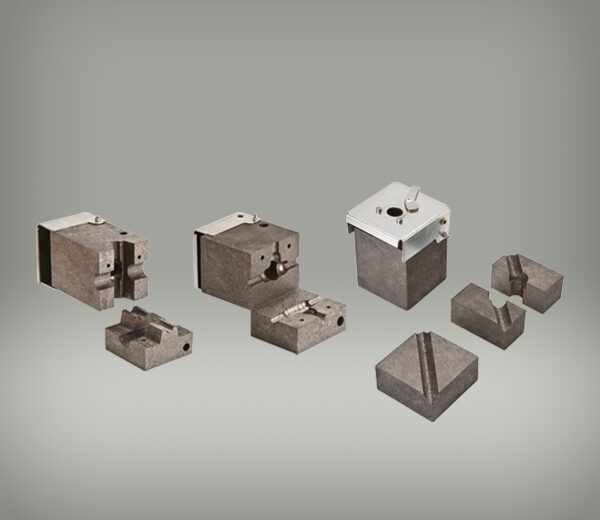Several key factors should be considered when exothermic (also called aluminothermic) welding is employed, in order to make the best use of the resources invested in the purchase of material and to improve the work in site.
When you are provided with all you need (welding compound, starting material, personal protection measures, cleaning kit, etc.) but you don’t have the required mould for the occasion, that may mean unnecessary delays or even the waste of a trip or a day’s work.
Since the graphite moulds are components that by its very nature suffer wear, how to make sure that the chosen mould suits our needs? that it is used as much as possible throughout its lifetime?
The following points are intended to help identify a number of cases that will better guide your choice.
TYPE OF CONNECTION AND FREQUENCY OF CASES
Do you make only one type of connection between two given conductors (cables, tapes, rods, re-bars,…) with fixed dimensions and a particular shape (lineal, in T, cross, parallel,…)? No doubt, you need an specific mould.
Do you usually need weldings with different shapes (in T, cross, to rod,…) between conductors with variable sections up to 95mm2? The multiple mould will serve to cover these cases, which are often not known until you get to work.
PROJECT SIZE
Specific moulds are always needed for any medium or large installation, since they allow to work quick and repetitively. Usually the order is made for the needed amount of specific moulds for a particular installation, letting only stock for the maintenance.
Anyway it is practical, and we do recommend it, to have always a multiple mould by hand, because experience shows that in important projects the response time may be essential in case or any mishap (unexpected connection type, conductor in bad conditions or with different dimensions, just for mentioning some of them). Then the multiple mould allows you to continue to work, so it never hurts to take one with you.
For small installations, maintenance tasks and reparations, the multiple mould is for sure the best solution. They are usually works with a small amount of weldings and often of different types. Probably each welding will take more time, but the profit taken of welding products is maximum.
This example may explain it better:
During one week, a installers team should make the following works:
· Monday: reparations in the public lighting network (weld earthing connections). Typical connections are 16 mm2 cable to 14.3mm earth rod.
· Tuesday: lightning protection installation. The team may find 50mm2 cable to 14.3mm earth rod or to other 50mm2 cable in T.
· Wednesday: woks in a house. Probably it is required to connect 35mm2 cable to 35mm2 cable in T and 35mm2 cable to 14.3mm earth rod.
And so on, for a diverse collection of cases.
For making all these works several different specific moulds would be necessary, while just with a single MM-CT14 all the mentioned works can be carried out.
WHAT ABOUT POWER STATIONS?
In power stations, where welding is usually obligatory, the specific mould is the only solution. Substations require thick cables (95mm2 or bigger) for which the multiple mould is not recommended. Besides, welding types are almost always in T and cross.
And as end point, an essential key may be in your own store.
WHAT INFORMATION CAN BE EXTRACTED FROM THE SHELVES?
If you have many specific moulds with a very low rotation, probably it is good for you to replace them by multiple moulds. If instead you need to frequently re-fill the stock of specific moulds, this is usually an indication that you are managing well the purchase of this item.
In short, we recommend stores and installation companies to have at least one multiple mould by hand, good for small jobs as well as to resolve unexpected problems in larger installations.
